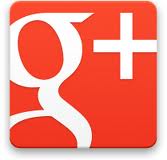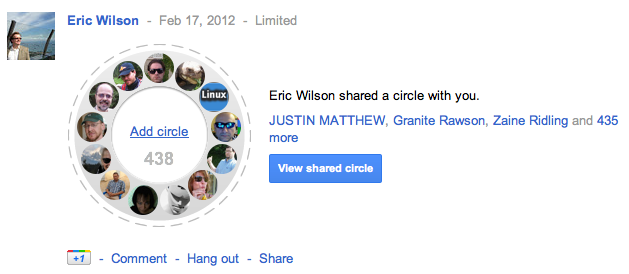Nobody Gives A Damn About Google+: Really?

Any one of my colleagues will tell you that I am no Google fan boy. I am weary of the data crunching capabilities it has aimed at your personal information. A timely illustration was provided recently when Google announced that it would create a unified model of your web activities from across each of its properties (e.g. YouTube, Gmail, Google Apps). This perceived act against consumer privacy has developed into much of a hullabaloo, especially when certain news outlets are citing that your information could be worth as much as $5,000 USD to market researchers and advertisers.
I’m keenly aware that there really isn’t any privacy on the Internet and Google’s move neither shocks nor offends me. It makes business sense.
Note: If you are concerned about the changes there are some actions you can take to limit Google’s ability to conjoin your information. Google also provides some tools to help you manage your information.
That said, I need a capable platform for social media and I am finding Google+ to be an excellent solutions partner.
I read a slew of articles last week deriding the existence of Google+. One from WSJ and another from MG Siegler that motivated me to post a comment on Google+ last week. Truthfully, there is a bit more to say about the value of this service so I’ll pen some additional thoughts here.
Google+ Circles
One of the most underappreciated features on Google+ is Circles.
Circles is an elegant mechanism for organizing people by category. I’m not highlighting just the simple relationship types (e.g. Family, Friends, Colleagues) but also more expressive types like Science. The ability to share a Circle allows the recipient to instantly subscribe to a curated list of interesting people – granted that the source of the Circle is trusted. Below is a screenshot of sharing a Circle within Google+.

Why is this concept so significant? Having an instant group of folks to get quality content from provides the elixir for engagement. Effectively, people are social when there are posts to be social about – get it?
Note to Google: Please allow me to subscribe to a plusser’s Circle versus me having to add it. If I trust the person who is sharing the Circle enough to add the Circle I trust them enough to maintain it.
Google+ Isn’t Twitter – Yay!
I use Twitter pretty much everyday but I’m loathing the 140-character limit. I am aware of the origins for the design decision but think that now the limit impedes dialogs more than it facilitates them.
Google+ has no such limits. In fact, you could create an entire blog there if you so desire (ala +Robert Scoble).
I enjoy the metaphor for threaded conversations in Google+ as it enhances readability and encourages quality interaction and commenting. Twitter may have a firehose of Tweets but my experience has been that comments about a post arrive more timely and are better organized on Google+. Add in Google’s ability to embed photos and videos inline and Twitter just can’t keep up.
I also find it convenient (and necessary) to be able to edit posts after they have gone live. Be it the occasional typo or new information that enhances the overall value of the post, editing is powerful and advantageous.
Why Not Facebook?
This is a hotly debated and somewhat religious topic. It seems to me that both services are pretty catholic with respect to what they offer. I will say that Google+ Hangouts are an incredible utility comparable to Skype video chat, except of course that Google+ multi user chat is free - as in beer.
It should go without saying that of course, Google has an incredible search engine behind Google+. This search asset will be near impossible to replicate at Facebook but with that engine comes other baggage – see the first paragraph in this post.
Certainly both services will borrow the best ideas from each other moving forward so any meaningful incongruence should even out over time.
It appears that folks may bifurcate their activity based on a professional versus personal bent. Google+ seems to be more professionally skewed at the moment with Facebook having the latest updates about your family and friends (although there is some chatter about teens leaving Facebook and heading over to Google+).
So is Facebook the competitor that should fear the most from Google+?
My money is on the Google+ vs. Twitter angle.
Why tweet when you can plost?™
I Give A Damn
The arguments about the ghost town of Google+ may hold water when the numbers of service users are compared to those of Facebook. I must say emphatically however that the folks I have been reading (most notably in my Science Circle) are generating and sharing incredible articles, original research and genuine insight that are beyond just entertainment – they are educational. My hope is that enough people are exposed to these good works so that I can selfishly continue to enjoy and participate with Google’s elegant social medium.
 Eric Wilson
Eric Wilson TAG
TAG
